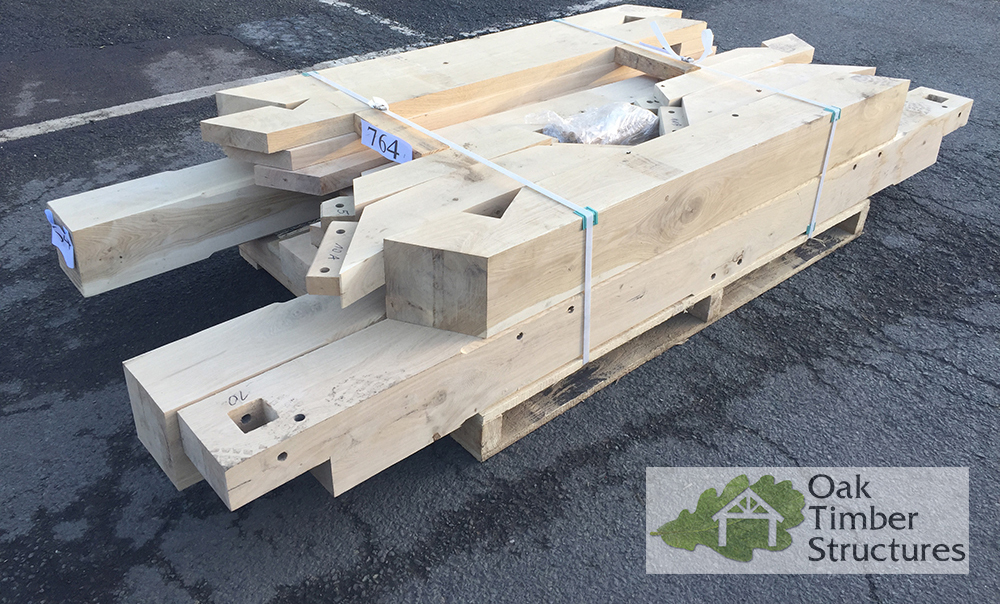
Contact us 01889 597 283 | contact@oaktimberstructures.co.uk
Contact us 01889 597 283 | contact@oaktimberstructures.co.uk
Crafted by our skilled artisans, we create each solid oak porch to customer specifications from scratch. Once created, our oak framed porches arrive on-site in kit form ready for easy assembly.
On hand held devices we recommend flipping the screen horizontally whilst designing your structure.
Remaing Characters /
Movement Scale
Move Structure into Position
Enlarge / Shrink Structure
Rotate Along Y Axis
Rotate Along X Axis
Rotate Along Z Axis
Remove Background Image and Reset
First impressions matter, so an awe-inspiring solid oak porch on your doorstep is bound to impress. The rustic grandeur of a porch is a warm, homely welcome for you and your guests.
When buying a porch from Oak Timber Structures, we deliver the highest quality.
First, we only use QPA and QP1 graded European solid oak. This is the highest grade available for construction.
What's this mean?
As the highest grade oak, the wood bears no defects as found on lower grade oak beams. What's more, we source our oak from sustainable forests.
Then, it's over to our skilled artisans whose years of experience and carpentry skills come to the fore.
They'll cut every beam with precision and plane each section of the oak framed porch. After a light sanding for a smooth finish, it's time to sculpt the joinery.
Using traditional mortise and tenon joints, each section connects to make a robust structure. All holes are pre-drilled and ready for joining with the supplied kiln dried oak pegs. We understand that as oak loses moisture, it shrinks, so we use this to tighten the joints over time.
Before the porch leaves the yard, we'll erect it to make sure it's a perfect fit. Not to mention, we'll code each section before dismantling to make for easy assembly upon delivery.
Whatever the size of the porch, the manufacturing remains the same. Rest assured, we take pride in our work regardless of size or cost.
Once assembled by a builder, solid oak framed porches add natural elegance to any home, boasting luxurious looks when walking up to the property.
Have you got a design unattainable through the 3D designer? Don't worry. Do a quick sketch and email it over to us at contact@oaktimberstructures.co.uk and call us on 01889 597 283.
Your frame arrives on a pre-arranged date. We'll liaise with you to find the best day and won't turn up unannounced.
We'll deliver the porch packaged and in kit form, as shown in the below picture.

If the porch requires brickwork, it's advised to get this built beforehand. Allow time for the mortar to dry before building the porch on top.
Included in the package are timber parts, such as braces, beams, rafters and joints. Joints are ready for assembly upon arrival. Mortise and tenon joints are in place with pre-drilled holes for the oak pegs.
The oak porch frame will hold together with everything in the pack. Depending on whether the porch has a roof, you'll need stainless steel screws to attach battens.
Remember never to use iron screws or nails. As oak has a high tannin content, this causes a chemical reaction which erodes iron. So make sure you use stainless steel screws.
Because the woodwork is complete, it's common to hire a builder to assemble it. Within the package, we supply a 'Parts Identification Drawing'. This drawing labels each part and corresponds with the coding on the porch beams to make for easy assembly.

We've put together a booklet of detailed answers to our most commonly asked questions. A perfect in-depth read about buying your oak structure from us.
This booklet is updated regularly to answer any new questions we've recieved.
BRITMET LiteSlate is a new roofing option we are supplying as an alternative to Cedar Shingles.
We offer a range of colours including:
LiteSlate is easy to install, lightweight and is virtually maintenance free!
Please take a look at the below BRITMET documentation for more information including comprehensive installation guidelines.
Browse photographs kindly sent in from previous clients: